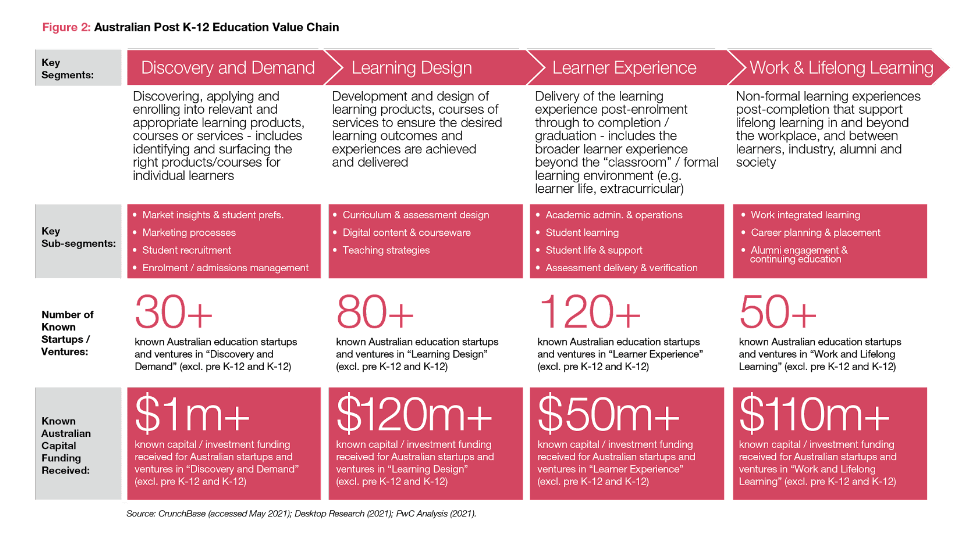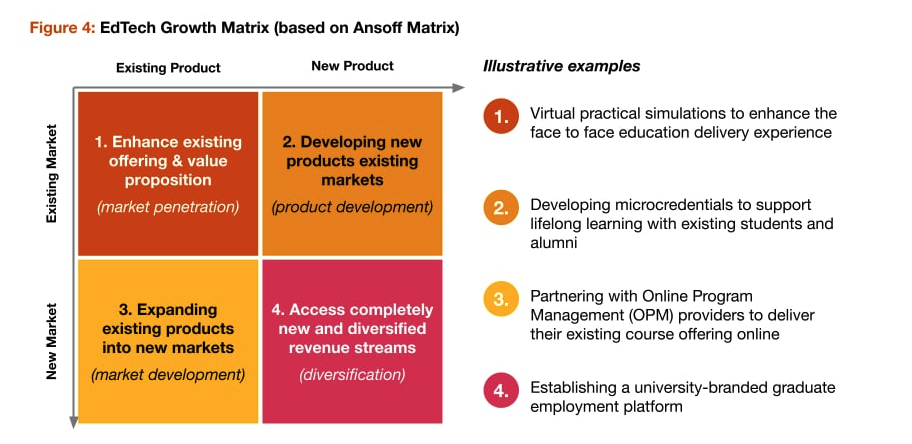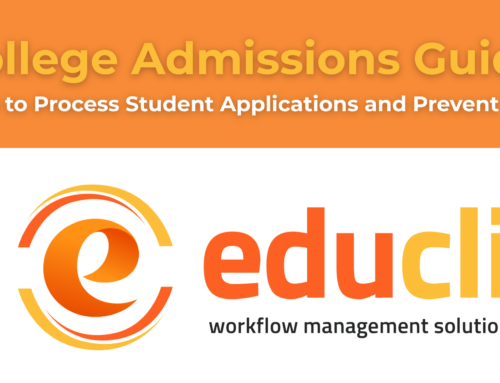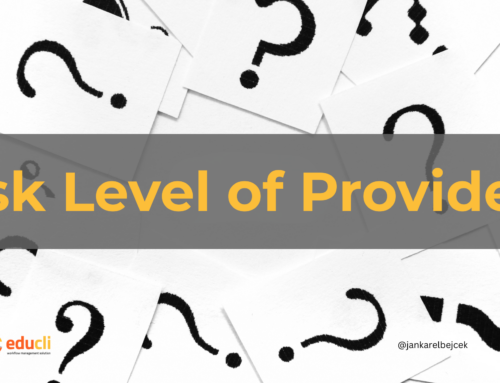Technology and EdTech startups are changing the face of education around the world. The education industry is currently undergoing a transformation that is accelerating its entry into the digital age. The spread of COVID has accelerated this shift, with many schools now relying on EdTech to keep their doors open during the pandemic. As time goes on, EdTech will remain crucial in Australia’s and the world’s education systems, as it will continue to test the limits of conventional methods.
In short:
- There is a great impact of educational technology (EdTech) on higher education institutions
- The use of educational technology (EdTech) has improved students’ ability to learn and generated new forms of expression in the classroom.
- Development of individualised instruction, gaming, and virtual and augmented reality for education
- Financial management, Students management and teacher preparation are the potential stumbling blocks of EdTech
The education technology industry has matured to the point where it is now worth over $250 billion worldwide. The capabilities and products of EdTech startups are moving in from the margins of the education industry. EdTech companies are now directly competing with traditional education giants like our world’s top universities for students by offering them new ways to learn (e.g., online, micro-credentials, stackable modules) that the established institutions have not yet developed.

Education technology in Australia is a booming industry that will help push the country’s educational system forward.
In Australia, the story is no different, with technological innovation being at the forefront of Australia’s economic reputation. The domestic EdTech startup sector is now the second largest startup community in Australia, behind only FinTech, more than doubling in size since 2017. For the foreseeable future, the sector will continue to see a rise in startup activity and innovation as it attempts to define the role of technology in the classroom. This represents an opportunity to improve the overall quality and relevance of education in the 21st century.
As technology continues to permeate every aspect of our lives, it is imperative that we incorporate digital literacy into our curricula. The advantages accrue even further for a widely dispersed nation like Australia, where improving educational outcomes for all citizens has long been a priority. This is true regardless of factors like where they live, their family’s socioeconomic standing, or the quality of their schools.
Numerous studies from the OECD have established the direct link between access to high-quality education and societal and economic outcomes. By harnessing the innovation within EdTech, we can enact intergenerational change by expanding educational access to enrich and improve life trajectories for all Australians for generations to come.
Domestically, the EdTech ecosystem is particularly active after the K–12 level. K-12 is an abbreviation that refers to the kindergarten, primary, and secondary levels of education. More than half of all Australian EdTech startups fall into the post-K–12 category (see Figure 2), which includes institutions of higher learning, vocational training, corporate training, and non-accredited lifelong learning. EdTech startups in Australia are present in every sector of the industry.

The education ecosystem as a whole has benefited greatly from the innovations spurred by these startups, which have allowed for things like the delivery of education entirely online, the delivery of assessments in a digital format, and the creation of virtual, work-integrated learning environments. But recently, the EdTech ecosystem has been focusing on digitally enabling student engagement models across the education value chain. These include peer-to-peer engagement before enrollment to help with recruitment, “in-semester” student-to-student engagement and support models, and mentoring and networking between alumni. Despite this significant activity, it is estimated that half the EdTech startup landscape is only in the subscale or early stages, indicating there is still significant innovation and disruption that is yet to be realised.
EdTech can help institutions achieve their transformational and strategic goals as they work to recover and adapt in the post-COVID era. The COVID-19 pandemic ushered the world, including the education sector, into a period of ongoing disruption and uncertainty and changed user preferences and expectations. Now, our education institutions are repositioning themselves for success in the post-COVID world to ensure that they continue to be an engine of innovation, creativity, and productivity. PwC’s “Fit for the new normal” report outlined three key questions that education institutions, especially universities, are currently grappling with as they seek to rebound from a period of unprecedented disruption:
- What is our purpose and differentiated proposition?
- How does our purpose determine our future activities and our size and shape?
- How will we develop the enablers for success in the new normal?
If educational institutions are serious about making a difference in the world, they must change not only the way they look and operate but also the way they think and perceive the world around them. EdTech plays a part in this as well. A growing number of EdTech startups are focusing on the post-K–12 education sector, and our educational institutions must decide whether to try to fend them off by creating their own competitive digital capabilities and offerings or whether to find new ways to work with EdTechs.
Historically, educational institutions have opted for the former, preferring to compete against more nimble startups despite being at a distinct disadvantage. These are typically in fields that complement their core competencies (like higher education award courses) but in which they do not have a competitive or “first mover” advantage (like micro credentials).
However, a growing number of educational institutions are shifting this paradigm and redefining the role of EdTech in the broader education ecosystem, seeing it as a source of external innovation and opportunity that can be used to fuel future growth and innovation at more traditional institutions. This idea is not new to the industry; over the past decade, more and more educational institutions have recognized the benefits of collaborating with EdTech startups rather than seeing them as competitors. However, most of these partnerships have been spur-of-the moment deals, with only a select few institutions systematically partnering with EdTech companies all the way through their value chain.

Leveraging EdTech to support the delivery of a school’s strategy is the key to unlocking the most strategic value for schools looking to form partnerships in the field.
A school’s long-term goals and objectives should be its guide when interacting with the EdTech ecosystem. By tethering EdTech initiatives to institutional goals, organizations can zero in on the specific markets and niches that will have the greatest impact on implementing their strategy and bringing about transformational change. Generally, this will resolve into one of four strategic motives for education institutions (see Figure 3):
- Improve its product offering and value proposition to existing markets (market penetration) through the use of innovative EdTech services and tools.
- Developing new products into existing markets (product development) or
- Partnerships with EdTech startups that address fundamental capability caps allow for product expansion into new markets (market development).
- Access completely new and diversified revenue streams (diversification) by spinning out internal capabilities or partnering with emerging ventures

Depending on the priorities of a specific institution, these factors may or may not be of importance. Whatever the case may be, it is crucial that the motivation be crystal clear from the get-go because this will be the ultimate guide that establishes the boundaries on where in the EdTech landscape they should engage and the clear “rules of engagement” that will allow them to engage with the EdTech ecosystem with laser-like focus.
In order to pinpoint the most pressing deficiencies or growth opportunities, institutions must next conduct an open and honest assessment of their current capabilities in light of these strategic motives. Prioritisation should be given to filling the most significant capability gaps that current EdTech businesses can meaningfully support and for which future roadmaps do not provide adequate coverage. There is no point in forming an EdTech partnership if the goal is to improve capabilities that are already market-leading or that can be better addressed internally.
When institutions have a crystal clear understanding of how EdTech can help them achieve their strategic goals, they can begin systematically evaluating the EdTech ecosystem in search of promising opportunities to embed and integrate EdTech capabilities into their core education offerings.
Collaboration on educational technology does not always involve signing contracts with outside businesses. It is just as important to know how the EdTech opportunity will help your institution’s long-term goals as it is to know what kind of engagement model will work best. Traditional commercial service agreement models are what come to mind first when educational institutions think about EdTech; however, understanding the alternatives available is important to ensure that all opportunities are appropriately considered. In our experience, there are typically three ways in which educational institutions interact with EdTech businesses:
- Commercial service agreements where EdTech businesses are contracted to develop or deliver an established set of products or services in exchange for an agreed fee can take the form of a simple license fee based on the number of users or learners, or it can take the form of more complex revenue share arrangements for long-term partnerships.
- Partnership between established organisations and emerging EdTech companies that begins at the ideation stage and continues through the development, testing, and eventual commercialisation of a groundbreaking new product or service
- Acquisition of an EdTech startup outright in order to gain full ownership and control of the product or service offering, as well as the associated capabilities and intellectual property. Afterwards, the acquiring institution may either integrate the acquired capabilities into its own organisation or keep the venture operating as a separate commercial entity serving both the acquiring institution and other educational institutions.
Each of these engagement mechanisms is suited to different situations and has its own set of benefits and tradeoffs (see Figure 5). From our experience, answering the following 5 questions will guide your thinking and decision-making on which is the best way to engage with EdTech:
- Are you satisfied with your current technology?
- What strategic priorities or gaps do you need EdTech to address?
- What capabilities are you looking for? (i.e. are they “nice to haves”, or are they fundamental to our strategy?)
- How urgently do we need to access these capabilities?
- To what extent can we build these capabilities internally in the short-term and long-term?
- What is our investment budget?
The potential benefits are much greater than what can be accomplished on a governmental level. Partnerships in education technology (EdTech) that support the aims of an institution can have a significant impact on student learning. Educli can support schools’ long-term objectives by increasing the effectiveness of classroom procedures and instructional strategies, which results in higher levels of student success. Our goal is to improve the skills of our employees by making available informative and digestible training materials. We also work to ensure that the next generation of Australians has a better and more prosperous future. What is at stake here is not just better education; it is a stronger economy and a more vibrant society for all of us.



